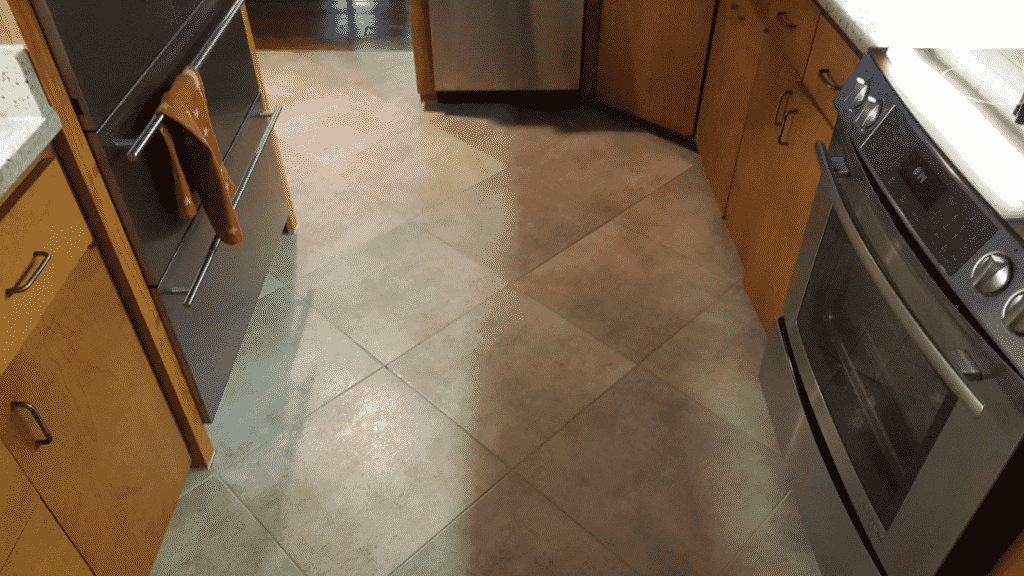Tile Flooring Installation Services
Installing tile seems simple enough, but the installer must follow many steps to meet the manufacturer’s specifications. If your tile installer does not follow the process, the installation will fail, and the time and money you invested will be at risk. Your stress and time are worth more than saving a few hundred dollars.
Nothing is more frustrating to any homeowner than choosing the perfect selection, only to find that in a few months to a year, the product starts to crack or come loose, the grout wears, and your beautiful new flooring is now an eyesore.
What’s worse is that not only do you have to re-install a new floor, but the existing tiled floor has to be removed, and then you may find that the perfect tile you spent time ordering and wanted has been discontinued.
Because of its use in daily walking, a poorly installed floor is one of the most common problems homeowners face.
Tile Installation and Procedures
The good news is you can find a quality tile contractor, but how can you know if they are the right contractor until the work has been done and the warranty runs out? If you are facing a lousy installation, ensure your contractor assesses the damage and explains why the product failed. Some signs you need to look for are;
- Has the existing tile flooring been laid on top of a wood floor? If so, did they install a concrete backer board? 1/2” thick is optimal, but in some cases, you can use 1/4” if you have a height restriction and the tile floor does not have a lot of movement. Sometimes, 3/4” plywood has to be installed over tile floors first.
- Does the backer board have an expansion gap if butted against another surface?
- Has the surface been cleaned before the tile was installed? Dust and debris can affect the adhesion.
- Has the tile been laid on a concrete floor? Does the foundation have sufficient piers, or are there any cracks? If so, an anti-fracture membrane must be installed under the tile before installation starts.
- Is the surface level? Sometimes, the floor has to be floated to ensure a level floor.
- Is the thin-set the mixture that the product is set with, and does it cover the entire tile? This is required. On larger pieces, the back of the tile has to be buttered, meaning thin-set it applied to the back of the tile and the floor for proper adhesion.
- Does the thin set have enough applied? Are there dried ridges on the failed installation? Noticeable ridges should be at least 1/8” thick and cover the entire surface.
- If the grout has cracked, it could be that it was not mixed properly, with insufficient or too much water. They had to add more grout, which weakens the mixture. Was it mixed long enough and allowed to sit long enough?
- Was the right trowel size used to spread out the thin set? Generally, the larger the tile, the bigger the teeth need to be, but some tiles have natural cupping, so you must allow for the cupping with a minimum of 1/8” of thin-set under the tile after it is laid. Also, you must visually check the tile by pulling it back up on the first tile. Are all of the surfaces appropriately covered?
Proper Tile Flooring Installation
The proper installation of your floor must meet these requirements to have your chosen product last for many years. Some installers skip some of these steps or all of them; it depends on the tile contractor and how much knowledge they have.


The Difference is Barrington One Construction
At Barrington One Construction, we have trained and qualified floor setters who regularly train to keep updated on the best products and procedures as they become available.
We find most problems at the time of the estimate, not after the work has started. Our methods have developed over many years, so you no longer have to worry about loose or broken ceramic or porcelain floors. Your investment is secure, and you can move on to other home improvements.
Sizes, Shapes and Textures
Flooring comes in many different sizes, shapes, textures, and colors. Some of the most popular tiles are;
Porcelain: 37%
Ceramic: 34%
Marble: 15%
Mosaic: 5%
Limestone: 3%
The Conclusion For Tile Floor Installs
T here are pros and cons for all materials and some need to match your specific purpose. Some tiles cannot be used for patios or shower floors where slipping and falling may occur. Finding a skilled and qualified flooring company is crucial in making sure you do not have to go through the process of reinstalling your floor multiple times. We want you to enjoy your new tile floor and be your tiling company now and far into the future.
